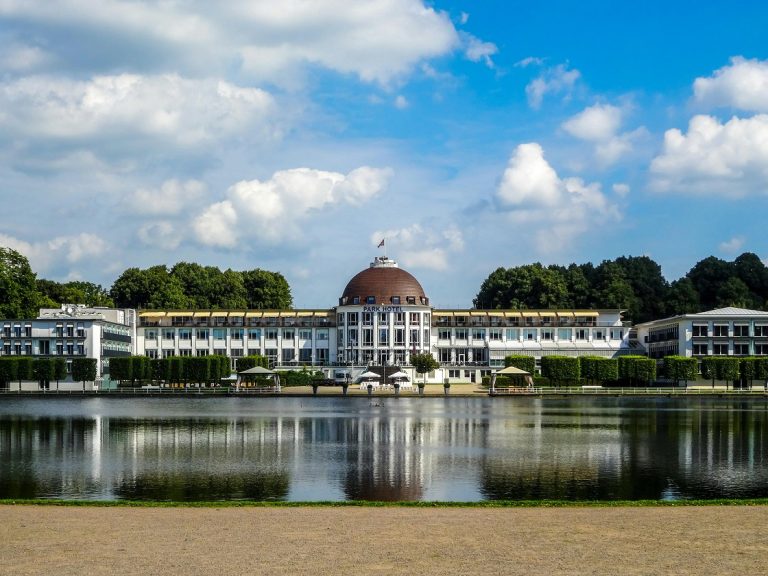Kloster Kamp Abbey: A Testament to Time, Faith, and Renewal
Nestled in the serene town of Kamp-Lintfort in Germany’s North Rhine-Westphalia,Kloster Kamp Abbey stands as a monument to nearly 900 years of spiritual devotion, resilience, and cultural significance. Founded as the first Cistercian monastery in Germany, it has served as a sanctuary of peace, a hub of learning, and a center for spiritual contemplation. Today, it remains a cherished cultural landmark, drawing visitors to its tranquil gardens, historic architecture, and enduring spiritual legacy.
Origins of Kloster Kamp: A Visionary Beginning
The abbey’s journey began in 1123, when Friedrich of Cappenberg, a nobleman inspired by the monastic ideals of simplicity and devotion espoused by the Cistercians, established it on a hill overlooking the Lower Rhine region. The Cistercian Order emphasized prayer, manual labor, and humility, and the remote location of Kloster Kamp was ideal for their purpose.
Initially, the land was barren, but the monks transformed it into fertile fields and vineyards, constructing a complex of striking yet modest buildings. Kloster Kamp soon became a model of monastic life, renowned for agricultural innovation, religious education, and artistic craftsmanship. Monks from across Europe were drawn to its spiritual and intellectual pursuits, and for centuries, the abbey thrived as a center of devotion, self-sufficiency, and communal living.
A Tumultuous History
Kloster Kamp’s enduring legacy was not without hardship. In the late Middle Ages, political unrest and military conflicts took their toll. The Thirty Years’ War in the 17th century devastated the abbey, scattering its community and damaging its structures. Despite these challenges, the monks’ resilience enabled the abbey to recover and grow stronger with each rebuilding effort.
The 18th century marked a renaissance for Kloster Kamp under Abbot Edmund von Holthausen. The creation of the Baroque terraced gardens during this period brought new life to the abbey. These gardens, renowned for their intricate design and tranquil ambiance, became a haven for reflection and meditation. The abbey’s architecture was also renovated in the grand Baroque style, symbolizing spiritual renewal and resilience.
However, Kloster Kamp’s resurgence was short-lived. In 1802, the secularization of religious institutions in Germany led to its dissolution. Its lands were confiscated, the community dispersed, and the abbey fell into disrepair. For over a century, it remained in ruins, a shadow of its former glory.
Revival and Renewal
In the 20th century, efforts to restore Kloster Kamp began. Recognizing its historical and spiritual significance, local communities and cultural preservationists undertook the task of reviving the abbey. By the 1950s, the abbey church was reconstructed, and subsequent decades saw the restoration of its gardens and remaining structures.
Today, Kloster Kamp stands as a vibrant cultural and spiritual center. Its meticulously maintained Baroque terraced gardens are a highlight, drawing visitors to experience their beauty and serenity. The restored abbey church, with its elegant architecture, offers a peaceful space for reflection, embodying the timeless spirituality that defines Kloster Kamp.
A Place of Pilgrimage and Reflection
Kloster Kamp has regained its role as a place of pilgrimage, welcoming thousands of visitors annually. It is a key stop on the Pilgrimage Route of St. James, one of Europe’s most renowned spiritual paths. Pilgrims find solace in its tranquil gardens, ancient halls, and sacred ambiance, following in the footsteps of countless seekers who have visited over the centuries.
The abbey also hosts a variety of cultural and religious events throughout the year, such as classical music concerts in the abbey church and meditation sessions in the gardens. Its museum, located in the former chapter house, offers insights into the history of the Cistercian Order and the enduring influence of Kloster Kamp.
Visiting Kloster Kamp Today
For those seeking a connection to history, spirituality, or nature, Kloster Kamp Abbey provides an unforgettable experience. Its tranquil setting, surrounded by lush gardens and rolling hills, offers a retreat from the busyness of modern life. Visitors can stroll through the magnificent Baroque gardens, explore the quiet corridors of the abbey church, or simply sit in silent contemplation, embracing the peace and beauty of this sacred place.If you want to visit this historic landmark, consider joining our wine tasting tour, which includes a stop at Kloster Kamp Abbey as part of its rich cultural itinerary.


















Leave a reply